by Gombobaatar Sundev and Christopher Leahy
The first comprehensive field guide to the birds to Mongolia.
by Gombobaatar Sundev and Christopher Leahy
The first comprehensive field guide to the birds to Mongolia.
May 11, 2020
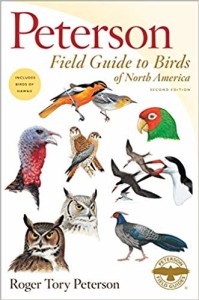
I love going through new fields guides to see what has changed: new species added, maybe some new illustrations, more features. So I’ve spent a little time going though the new Peterson Field Guide to Birds of North America, Second Edition page-by-page, comparing it against the previous edition (which was, surprisingly, published about 12 years ago). The changes I’ve found are detailed below. I am not, however, including illustrations and range maps that have been tweaked. I noticed many such instances, especially changes to the colors of existing illustrations. And I’m sure that I missed many more.
The big, shiny new feature in this second edition is the inclusion of the Birds of Hawaii! This is a separate, 50-page section following the main plates. The organization is the same as in the main body, with illustrations on the right and text accounts/range maps on the left. The maps are particularly nice, showing both the range against the entire island chain along with zoomed-in depictions of each island.
Forward and Editor’s Note
Large range maps in the back
You would expect this new edition to be larger than the first, especially with the adding of Hawaii. But in fact, these removals more than offset the additions so that this edition is 24 pages shorter and 15% (6oz) lighter.
Introduction – largely the same, but with a few minor changes, such as the inclusion of some examples from Hawaii.
Terminology – this edition has “refined and standardized our terminology, replacing such imprecise terms as ‘immature’ with specific age groupings (such as juvenile, adult, first-year, second-winter, etc.) and, for plumages, we have replace the labels ‘breeding’ and ‘nonbreeding’ with ‘spring/summer’ and ‘fall/winter,’ respectively”. Further, the male and female symbols have been replaced with the word.
Sequence – although there is no mention of it in the introduction, the sequence of birds has been changed from strictly taxonomic to one that groups “waterbirds” together first, then “landbirds”, very similar to the order used by The Crossley ID Guide
Range maps – now includes migration range in yellow
Plates (Species in bold are new to this edition.)
Here are the few errors that I noticed.
May 5, 2020
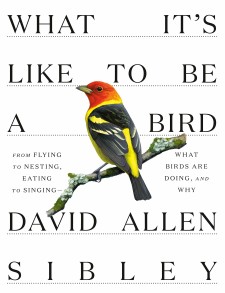 What It’s Like to Be a Bird: From Flying to Nesting, Eating to Singing-What Birds Are Doing, and Why
What It’s Like to Be a Bird: From Flying to Nesting, Eating to Singing-What Birds Are Doing, and Why
by David Allen Sibley
From Knopf:
The bird book for birders and nonbirders alike that will excite and inspire by providing a new and deeper understanding of what common, mostly backyard, birds are doing–and why.
“Can birds smell?” “Is this the same cardinal that was at my feeder last year?” “Do robins ‘hear’ worms?” In What It’s Like to Be a Bird, David Sibley answers the most frequently asked questions about the birds we see most often. This special, large-format volume is geared as much to nonbirders as it is to the out-and-out obsessed, covering more than two hundred species and including more than 330 new illustrations by the author. While its focus is on familiar backyard birds–blue jays, nuthatches, chickadees–it also examines certain species that can be fairly easily observed, such as the seashore-dwelling Atlantic puffin. David Sibley’s exacting artwork and wide-ranging expertise bring observed behaviors vividly to life. (For most species, the primary illustration is reproduced life-sized.) And while the text is aimed at adults–including fascinating new scientific research on the myriad ways birds have adapted to environmental changes–it is nontechnical, making it the perfect occasion for parents and grandparents to share their love of birds with young children, who will delight in the big, full-color illustrations of birds in action. Unlike any other book he has written, What It’s Like to Be a Bird is poised to bring a whole new audience to David Sibley’s world of birds.
Gorgeous art and fascinating information come together here. The organization makes it easy to pick up and read whatever strikes your fancy, while the depth of information means that anyone can learn a great deal. And then there’s the art – lots and lots of it. All that makes this book attractive to anyone even remotely interested in birds.
What It’s Like to Be a Bird: From Flying to Nesting, Eating to Singing-What Birds Are Doing, and Why
by David Allen Sibley
Hardcover; 240 pages
Knopf; April 14, 2020
ISBN: 9780307957894
$35.00
April 26, 2020
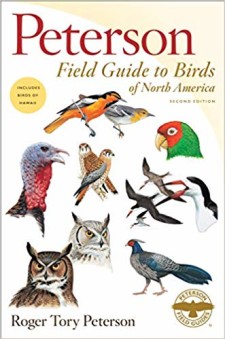 Peterson Field Guide to Birds of North America, Second Edition
Peterson Field Guide to Birds of North America, Second Edition
by Roger Tory Peterson
From Houghton Mifflin Harcourt:
For decades, the Peterson Field Guide to Birds has been a popular and trusted guide for birders of all levels, thanks to its famous system of identification and unparalleled illustrations. Since the American Birding Association has expanded its species Checklist to include Hawaii, the Peterson Field Guide now includes the wonderful and exotic species of our fiftieth state. In addition, the text and range maps have been updated, and much of the art has been touched up to reflect current knowledge.
This is the second edition of the “Big Peterson”, covering the entire continent (well, the ABA Area to be specific). This one actually does cover the entire area, as it now includes a 50-page section on the Birds of Hawaii.
I’ll be posting a detailed comparison between the two editions soon.
Peterson Field Guide to Birds of North America, Second Edition
by Roger Tory Peterson
Flexicover; 522 pages
Houghton Mifflin Harcourt; April 7, 2020
ISBN: 9781328771445
$29.99
by Harold F. Greeney
An impressive reference in the Helm Identification Guide series.
March 11, 2020
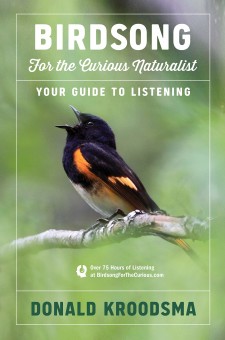 Birdsong for the Curious Naturalist: Your Guide to Listening
Birdsong for the Curious Naturalist: Your Guide to Listening
by Donald Kroodsma
From Houghton Mifflin Harcourt:
Birdsong made easy to understand, lavishly illustrated with color photos, and accompanied by more than 700 online recordings
From a leading expert, Birdsong for the Curious Naturalist is a basic, how-to guide that teaches anyone—from beginner to advanced birder—how to listen. In understandable and appealing language, Kroodsma explains why and how birds sing, what various calls mean, and what to listen for from the birds around us. The descriptions are accompanied by color photos of the birds, as well as QR codes that link to an online collection of more than 700 recordings. With these resources, readers are prepared to recognize bird sounds and the birds that make them. Kroodsma encourages readers to find the joy of birdsong and curiosity—to observe, listen intently, be curious, ask questions, and realize that many unanswered questions about birdsong don’t have to rely on scientists for answers but can be answered by any curious naturalist.
No one writes about birdsong better than Donald Kroodsma. This book is the perfect introduction to it for birders or, as the title suggests, ‘curious naturalists’. The many sounds referenced in it are available on its website – birdsongforthecurious.com. Check it out to hear – and read a bit – what it’s all about.
Birdsong for the Curious Naturalist: Your Guide to Listening
by Donald Kroodsma
Hardcover; 208 pages
Houghton Mifflin Harcourt; March 10, 2020
ISBN: 9781328919113
$27.00
February 22, 2020
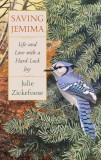
by Julie Zickefoose
The author chronicles her experience raising an orphaned Blue Jay.
There’s already quite an impressive selection of bird books set to be published in 2020. Here are the ones that have caught my eye.
Apparently, 2020 is the Year of the Bird-Behavior-and/or-Senses Book. These topics are endlessly fascinating, so I’m certainly not complaining. I’m really looking forward to all of these:
 What It’s Like to Be a Bird: From Flying to Nesting, Eating to Singing–What Birds Are Doing, and Why
What It’s Like to Be a Bird: From Flying to Nesting, Eating to Singing–What Birds Are Doing, and Why
This is quite the unexpected title from Sibley, known mostly for his field guides. But this sounds really cool. Plus – life-size paintings! (“For most species, the primary illustration is reproduced life-sized”, according to the publisher’s description.)
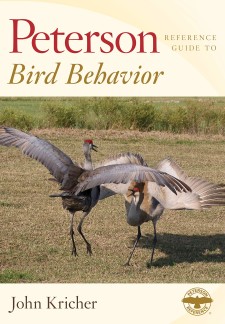 Peterson Reference Guide to Bird Behavior
Peterson Reference Guide to Bird Behavior
I was really excited to see this one coming; the Peterson Reference Guide series has been consistently great.
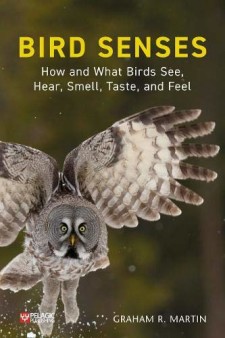 Bird Senses: How and What Birds See, Hear, Smell, Taste, and Feel
Bird Senses: How and What Birds See, Hear, Smell, Taste, and Feel
Pelagic Publishing has put out some great books, so I have every reason to be optimistic about this one.
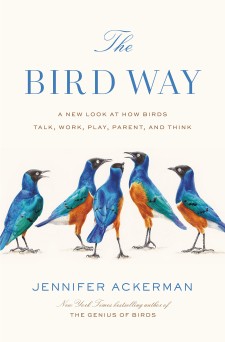 The Bird Way: A New Look at How Birds Talk, Work, Play, Parent, and Think
The Bird Way: A New Look at How Birds Talk, Work, Play, Parent, and Think
Ackerman’s The Genius of Birds was great, so I have high hopes for this one also.
I didn’t notice very many field guides coming this year, but that’s probably because I either missed them or they haven’t been announced yet. However, a new edition of one of the most popular North American guides is a big deal, and the latest addition to the ABA area is getting lots of love.
 Peterson Field Guide to Birds of North America, Second Edition
Peterson Field Guide to Birds of North America, Second Edition
I can’t believe it’s been almost 12 years since the first edition of this continent-wide version of the Peterson Guide was published. But we won’t have to wait long for the new Western (September 8) and Eastern (October 13) editions. And, what’s more, this will now include Hawaii!
 American Birding Association Field Guide to Birds of Hawaii
American Birding Association Field Guide to Birds of Hawaii
This is an excellent state field guide series, it’s great that they’re doing Hawaii.
Texas is the subject of several books this year, several of which look to be of interest even if you don’t live there.
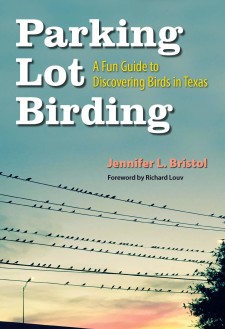 Parking Lot Birding: A Fun Guide to Discovering Birds in Texas
Parking Lot Birding: A Fun Guide to Discovering Birds in Texas
Sounds like a unique bird-finding guide.
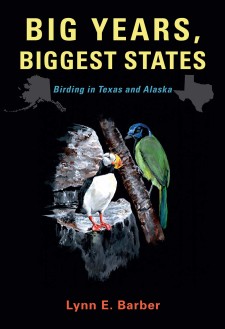 Big Years, Biggest States: Birding in Texas and Alaska
Big Years, Biggest States: Birding in Texas and Alaska
I’m a sucker for big-year books. Texas and Alaska should provide quite a contrast.
If you’ve been birding for any time at all, you know the Texas coast is special. This book sounds like an interesting exploration of that place, its birds, and people.
 Birdsong for the Curious Naturalist: Your Guide to Listening
Birdsong for the Curious Naturalist: Your Guide to Listening
An introduction to birdsong, from the best writer on the subject.
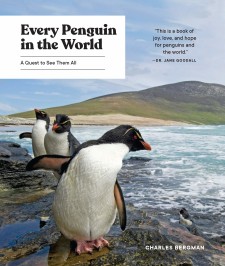 Every Penguin in the World: A Quest to See Them All
Every Penguin in the World: A Quest to See Them All
Who wouldn’t want to see every penguin in the world?
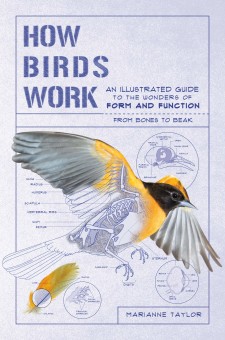 How Birds Work: An Illustrated Guide to the Wonders of Form and Function ― from Bones to Beak
How Birds Work: An Illustrated Guide to the Wonders of Form and Function ― from Bones to Beak
This just looks really cool.
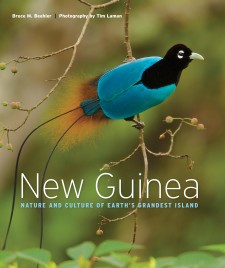 New Guinea: Nature and Culture of Earth’s Grandest Island
New Guinea: Nature and Culture of Earth’s Grandest Island
It’s New Guinea. What nature-loving person wouldn’t be enticed by this title?
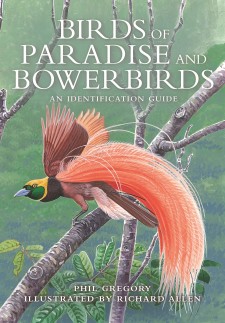 Birds of Paradise and Bowerbirds: An Identification Guide
Birds of Paradise and Bowerbirds: An Identification Guide
A new guide to the most famous avian denizens of New Guinea.
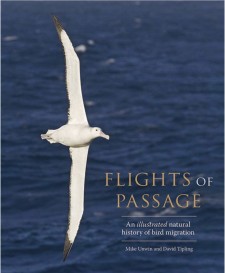 Flights of Passage: An Illustrated Natural History of Bird Migration
Flights of Passage: An Illustrated Natural History of Bird Migration
This topic + this author + this photographer = one amazing looking book.
by Guy M. Kirwan, Anthony Levesque, Mark Oberle, and Christopher J. Sharpe
An excellent new field guide to the islands of the West Indies.
December 30, 2019
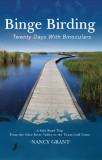
by Nancy Grant
The story of a twenty-day road trip to bird along the gulf coast of Texas.